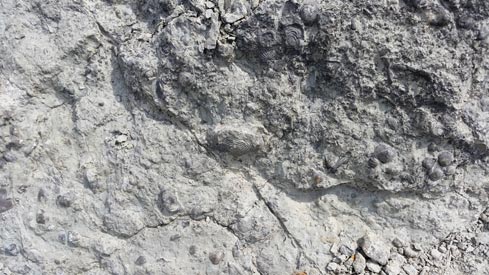The Limestone Fossils of Dudley (Wren’s Nest)
Visit to the Wren’s Nest Nature Reserve (Dudley, West Midlands)
Prior to the first of Everything Dinosaur’s summer schools just time for team members to take in a quick trip to the famous Wren’s Nest National Nature Reserve (Dudley, West Midlands). It was an early start, (yet again), but it did prove worth it as the weather behaved and team members were able to enjoy a walk around this very significant part of the world (in terms of geology anyway), before having a picnic close to the famous Silurian ripple beds.
Silurian Ripple Beds
The Silurian ripple beds are just one of the amazing geological features to be found in this abandoned quarry. The area was declared a National Nature Reserve back in 1956 due to the amazing fossil assemblage that can be found over the 100 acres or so of the Reserve. Some seven hundred different invertebrate fossils have been identified at the site, they date from the Silurian age (approximately 423 million years ago), the rocks themselves being part of the Wenlock Group. Eighty-six of the fossil types are unique to Dudley, they have been found nowhere else in the world.
The Amazing Ripple Beds of Wren’s Nest
Picture credit: Everything Dinosaur
A Close up of the Silurian-aged Ripple Beds of Wren’s Nest National Nature Reserve
Picture credit: Everything Dinosaur
The quarry work ended in 1925 and when the Reserve was created it was the UK’s first ever geological National Nature Reserve. It the area has also SSSI (Site of Special Scientific Interest) status due to its geological, palaeontological and historical significance. It is also home to a wide variety of wild flowers and the caverns, now barricaded to prevent human visitors provide invaluable overwintering habitats for a number of species of bats.
Wren’s Nest
Although this picturesque nature reserve is enjoyed by local residents and visitors alike, it is the huge variety of invertebrate fossils that amazes team members. Whilst we enjoyed our picnic (taking great care to remove all our litter), we marvelled at the array of fossils that can be found eroding out of the limestone beds (no hammers allowed).
We contented ourselves by taking some pictures of the rich fossil assemblage, fossils to be found at this location include corals (tabulate and rugose forms), crinoids (sea lilies), brachiopods, bivalves, gastropods and some trace fossils (worm tubes). Sadly, the trilobite fossils that made this part of the world so famous are increasingly rare.
A Close up of the Amazing, Highly Fossiliferous Limestone at Wren’s Nest
Picture credit: Everything Dinosaur
The exposed rock faces of the various quarry sites give geologists a unique opportunity to teach Silurian geology to students in an outdoor setting. The location provides a definitive section through the Wenlock Formation. The town of Dudley, is synonymous with the Wenlock limestone strata and the fossil assemblage contained therein. This internationally famous location has provided a valuable insight into the marine life in coral sea environments during the Late Silurian geological period. Both macro and micro-fossils have been preserved at this site.
Everything Dinosaur team members certainly enjoyed their visit to the fossil rich Wren’s Nest National Nature Reserve to celebrate the tenth anniversary of the company.
The UK-based mail order company stocks a variety of replicas of iconic fossil animals such as trilobites. To view this selection: Replicas of Iconic Fossils.




